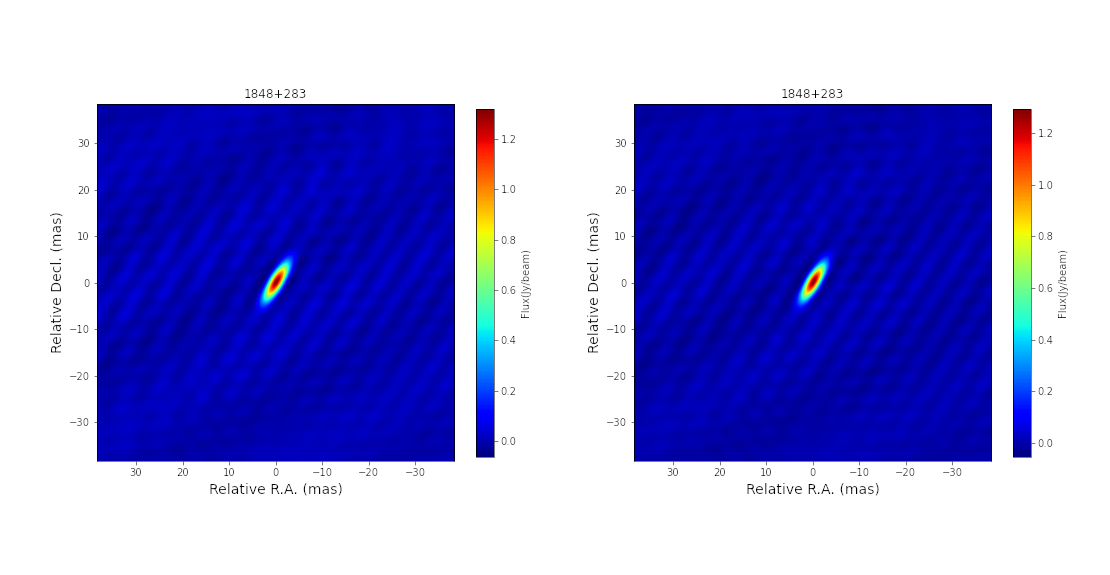
CASA on the fringe: processing of VLBI observations in CASA
by Ilse van Bemmel, Mark Kettenis, Des Small and Marjolein Verkouter (JIVE, the Netherlands)

The Common Astronomy Software Applications (CASA) software package is now capable of calibrating the majority of VLBI observations. The new tasks and functionalities to process and calibrate VLBI observations - whose implementation has been led by JIVE - are described in a paper published in the Publications of the Astronomical Society of the Pacific (PASP) journal. In addition to a description of the software, a comparison with AIPS processing is included, demonstrating the results are of similar quality (as shown in the enclosed figure). This paper appears jointly with the new CASA reference paper, which gives a high-level overview of the entire CASA 6 series.
The Python integration in CASA enables astronomers to easily access the CASA tools in automated scripts and in the Jupyter notebook environment. This makes the package ideal for both pipeline development and education of new users, making VLBI more accessible.
Starting as part of the BlackHoleCam ERC project, JIVE has led the implementation of the functionality required for VLBI data processing in the CASA package, with the first releases appearing as part of the later CASA 5 series. Since then, VLBI data processing in CASA has matured and is now capable of handling the vast majority of VLBI observations. This has significantly lowered the threshold for calibrating and analysing VLBI observations by non-experts.
A close collaboration with NRAO ensured that the underlying CASA software infrastructure can handle the specific calibrations. Two new tasks have been implemented: fringefit and accor. The fringefit task is based on the Astronomical Image Processing Software (AIPS) FRING task; it has recently been expanded to handle dispersive delay corrections. Many existing CASA tasks have been upgraded to properly handle VLBI observations and their meta-data. The new CASA-VLBI functionality has been extensively tested and verified in the development of a CASA-based pipeline for the Event Horizon Telescope.
Subsequent funding from the H2020 ESCAPE project has allowed JIVE to develop a Jupyter-CASA kernel and associated notebooks for calibration of European VLBI Network (EVN) continuum data. The notebooks exploit the new CASA VLBI functionality, as well as newly developed interfaces with the Virtual Observatory, and they observe the FAIR principles for astronomical data collection. It has enormous benefits for educational purposes and attracting new users for VLBI facilities such as the EVN and Very Long Baseline Array (VLBA).
Since the VLBI community has been relying on the AIPS software for decades, the CASA-VLBI paper demonstrates how CASA and AIPS compare in the calibration quality. Though the computational speed of CASA is still slower, the quality of the calibration is comparable, and sometimes even better. The flexibility and parallelisation of the CASA package have clear benefits in optimising the performance. In the longer term, the CASA development (including the VLBI functionality) will move towards scalable architectures that will enable the package to evolve with the ever-growing data rates of (VLBI) telescopes and significantly improve its performance.
Please use the CASA reference paper and this article as citations for the CASA software package or VLBI-specific CASA implementations within articles that use these resources. For people interested in learning more about VLBI data processing in CASA, JIVE is hosting the third CASA-VLBI workshop on 5-9 June 2023 in a hybrid event.